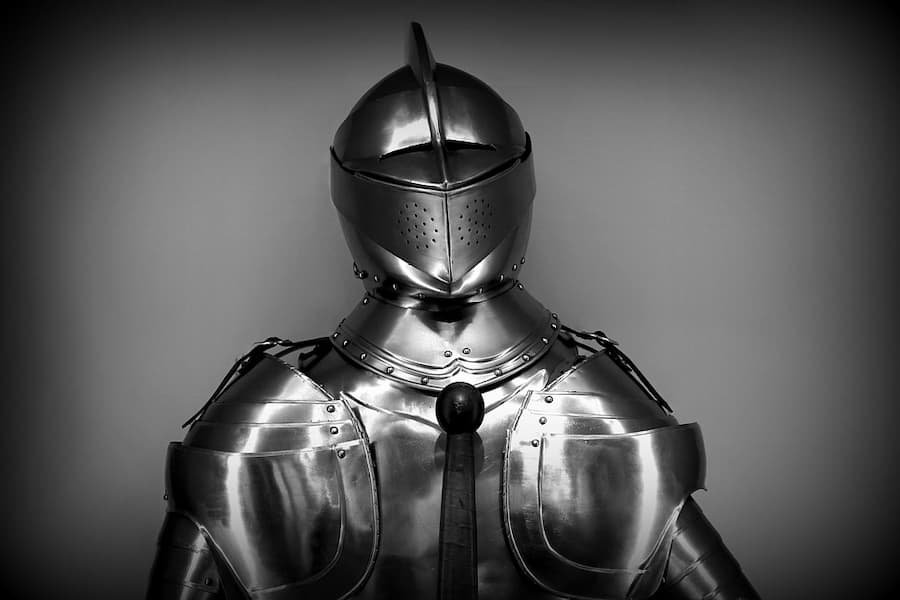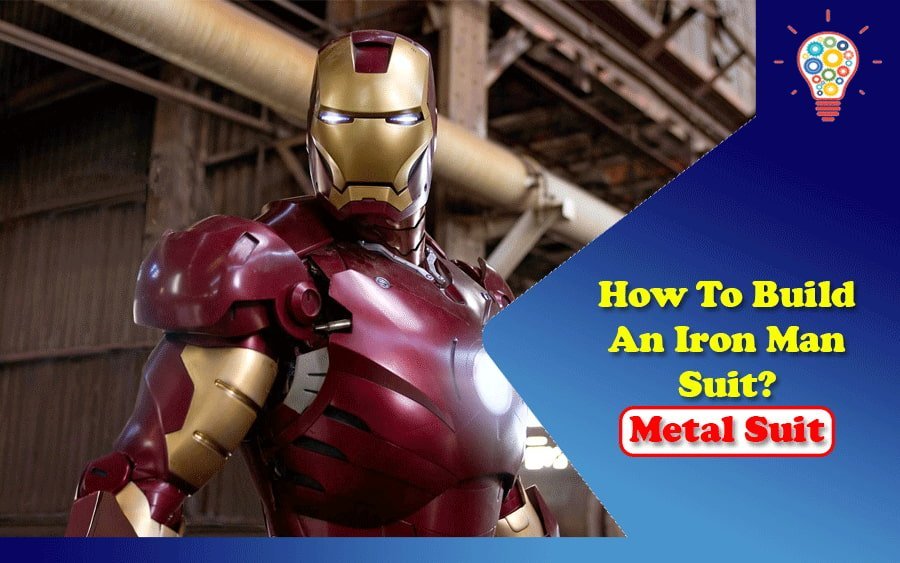Ever since iron man’s character was introduced into Marvel’s cinematic universe in 2008, iron man’s popularity has grown to the next level. Iron man first appeared in Marvel Comics in the year 1963 as a superhero with a genius-level intellect who built his own powered armor metal suit that gives him superhuman strength and the ability to fight in battles. Marvel fans all over the world have constructed their own custom sheet metal fabrication suit with varying degrees of functionality and features.
It truly fascinates us to come across many breakthrough innovations and development of metal iron man suits by fans and certain organizations over the past few years. Furthermore, the military also has a long history of experimenting with fiction-inspired technologies, and the Iron man metal suit has always been one of the most experimented, fiction-inspired technologies in the modern era.
Metal iron man suits consist of technology such as robotics, artificial intelligence, and advanced wearable solutions that allow one to wear the metal suit for a long period of time. If you are a marvel fan who is looking for ways to build their own iron man metal suit then you are in the right place. In this post, we discuss some exciting factors and information about this amazing full metal body armor suit and the ways how a real-life iron man metal suit is made. So without wasting any time further, let us explore this post.
Table of Contents
What is a real-life iron man metal suit?
As a matter of fact, the iron man metal suit is not really made of iron. The kind of technology it holds can not be simply fulfilled by iron alone. A real-life metal iron man suit requires significant advances in the area of powered exoskeletons. A powered exoskeleton is a wearable machine that uses various electric motors, hydraulics, actuators, pneumatics, and other related technologies that helps in enhancing the operator’s strength and endurance.
Over the past few years, many experts have established technologies to build a foundation for future functional metal iron man metal suits are as follows:
- Rex Bionics has created a powered exoskeleton that helps patients with neurological disorders and spinal cord injuries with certain rehabilitation exercises.
- A wearable robotic exoskeleton is created by ReWalk that restores hip and knee mobility for patients with spinal cord injuries.
- Lastly, a series of industrial exoskeleton products were released by Ekso Bionics to help reduce certain injuries and improve lifting and material capabilities in manufacturing, construction, and other related industrial setting purposes.
An exoskeleton or ‘external skeleton’ is generally known as an external framework of metallic bones and muscles that helps in protecting your body along with enhancing and increasing the physical power exponentially. Surprisingly this technology can be possible in the real world as well. There are many experts who have developed a few prototypes with metal iron man suit similarities but are yet to be out in the market.
This means that in the coming future we can expect a metal suit that will not fly but will also have the ability to zoom out of danger and quickly cross massive distances through the air. Besides, there are many other purposes for which the metal suit can be used such as to help paralyzed patients to communicate better and move freely with people around them.

What metals are used to make an iron man’s metal suit?
As mentioned above, an iron man metal suit is typically not made of iron as the name “Iron Man” may imply. Iron is an extremely heavy and dense metal that is prone to get rusted very easily. In addition, iron is also not considered a strong metal in comparison to its own alloys including steel. Therefore it can be safe to say that Tony Stark definitely did not use iron in making his full body metal armor suit to fight battles with aliens, because he would clearly not have survived the battle otherwise.
There are a number of metals that can possibly be used in making a metal iron man suit, however, the gold-titanium alloy is considered one of the best options in the making of a metal suit. The reason why titanium could be used in the making of metal suits is that it is a fairly strong metal that is relatively resistant to heat and impressively light in weight. In addition to that titanium is also capable of healing and regaining its shape once heated beyond the transformation temperature.
Another alternative titanium alloy that can be used in the making of metal iron man suits is single-crystal titanium. Single-crystal titanium is an extremely hard metal that consists of corrosion-resistant properties and can also withstand significant levels of heat. Moreover, single-crystal titanium alloy is also becoming increasingly popular in the aviation industry for the construction purposes of jet engines.
How metal stamping can contribute to the manufacturing of iron man metal suits?
Metal stamping is basically a manufacturing process that can be used in converting metal sheets into certain shapes and sizes. It is a complex process that encompasses a variety of processes in order to achieve the desired metal suit shape. In this process, the flat metal sheet is placed in either coil or banking form, into a stamping press to convert the sheet metal into the desired shape. The process can be done with help of many techniques such as punching, blanking, bending, embossing, coining, and other related techniques.
There are many industries that rely heavily on stamping to create high-performance parts and components of their equipment. We have listed below some of the common industries that rely on the stamping method such as
1. Aerospace
Metal stamping can easily create reliable parts and components from hard and high-performance metal sheets including titanium, aluminum alloys, and galvanized sheets that are highly preferred in aerospace applications.
2. Automotive
In the automotive industry, stamping can help in creating structural components, chassis elements, and other mechanical parts that are used in vehicles.
3. Electronics
In the electronic industry, metal stamping helps in producing many critical components that can be used in robotics, the Internet of Things solution, wearable technology, smart technology, and other virtual-related solutions.
4. Military and defense
Stamping metal has always been helpful in creating many military and defense components and equipment over the past few years. Military and defense components that can be constructed using the stamping method are brackets, connectors, EMI shielding, bushings, and more.
Therefore, it is safe to say that stamping will have a critical role to play in the production of a powered exoskeleton metal suit at some point in the coming future.

Common Sheet metal stamping process
Now let us look at some of the common stamping processes that you might come across during the metal stamping process. Each different type of process has its own distinct feature that can be used for different purposes such as the creation of an iron man metal suit and more.
1. Forming
Forming is the process of transforming the flat metal into the desired shape by applying force. Depending on your design specification, needs, and preferences this process can be accomplished in one of several ways. The forming process can help in shaping simple metal forms into relatively complex ones, especially for metal suits.
2. Blanking
Blanking is one of the most basic techniques in the stamping process. In this process when the sheet or blank is fed into the process, the die cuts out the desired shape from the processor. The piece that is cut into a certain shape is called a blank. The blank can either be the finished piece or can also be further processed if needed. This process is most preferable for cutting larger sheets or coils of metals into smaller and manageable pieces for the making of metal suits.
3. Drawing
Drawing is one of the most complicated processes on the list. With the help of drawing a vessel or deep depression shape metal can be formed. In this process, tension is used to carefully draw the material into a cavity to change its shape. However, in this process, there are chances of your metal suit getting stretched while it’s drawn. Components such as sinks, cooking equipment, and oil pans for vehicles are usually made with the help of this process.
4. Piercing
The opposite process of blanking is called piercing. In the piercing process rather than saving blanks, the technicians usually use the materials around the outside of the punched area. This way the materials are not wasted and can be utilized for other purposes as well. Piercing can be performed simultaneously with blanking, on parts of a metal suit that require slots, holes, and cutouts.
5. Bending
Bending is usually performed after the drawing process. This process helps in punching an already bent piece of metal suit that can cause the entire part or metal to deform. It is also important to note that to perform this process your metal should have enough space to allow the metal to bend.
6. Air bending
The air bending process often tends to use less power and pressure to perform the task compared to other bending processes mentioned on the list. Air bending is the process where the flat surface of a part is bent by a punch into a die that is often V-shaped. The space left between the punch and die is generally larger than the metal thickness. Air bending can help in relaxing this part of the metal suits and sheet.
7. Bottoming and coining
Bottom and coining is another bending process that is similar to the air bending method. With this process, you will be able to create a much smoother edge in the coined area of your metal suit. The coining process can help in adding additional strength to localized areas of your metal. Bottoming and coining can result in a more permanent bend compared to other processes.
8. Pinch trimming
The method of cutting a piece from the metal sheet and separating it from the scrap metal is called pinch trimming. In this process, the metal suit is pinched against a flat vertical surface. Pinch trimming is often considered an unconventional stamping technique in the market. This process can be used in cutting deep-drawn round cups from the sheet. However, the pinch trimming process is often not the first choice of most technicians to cut deep rounds on the metal sheet.

How to make an iron man suit?
To construct a metal iron man suit you might require advanced technologies and the right material to develop the suit accordingly. It can be extremely difficult to make your own metal suit if you don’t have sufficient experience, knowledge, and materials for the same. However, we live in a society where most of the technologies required to make a metal iron man suit are already available or invented by experts. If you lack the scientific knowledge to develop your own suit then you must consider seeking help from experts or professionals who might help for the same.
We hope this article was helpful to you to understand more about iron man metal suits. You can visit our website today or contact us to know more about metals or simply explore various types of distinguished metals available on our website.
Read also: Metal Plaques: The Effective Way To Advertise Your Business

